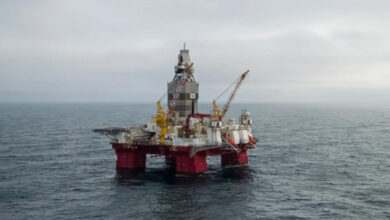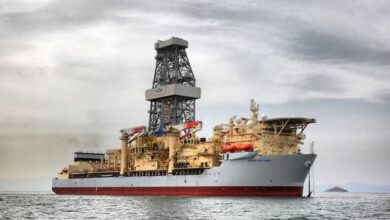Mine of the Future program may hold important lessons for drilling automation
By Katie Mazerov, contributing editor
Can lessons learned in a remote iron ore mine in Australia transfer to the oil patch? Unlikely as that may sound, as the drilling industry continues to forge ahead on the path of automation, other industries, notably mining, are implementing their own robotic and automated systems designed to deliver greater efficiency, reduce costs and improve health, safety and environmental stewardship.
Global mining company Rio Tinto will lead a presentation on its ambitious Mine of the Future program at the Drilling Systems Automation Symposium on 4 March in Amsterdam. The event was developed by a steering committee led by John de Wardt of De Wardt and Company, incorporating the SPE Drilling Systems Automation Technical Section (DSATS) and the IADC Advanced Rig Technology Committee. Keynote speakers will be Andrew Stokes, Rio Tinto global practice leader, surface mining Innovation, and Eric Nettleton, manager development with Rio Tinto Innovation, along with executives from other companies working with the company in developing the project.
Since the Mine of the Future endeavor began more than a decade ago, Rio Tinto has developed a highly automated and robotic program in the West Angelas iron ore mine in the Pilbara region of Western Australia. Central to the program is the combination of autonomous machines with the ability to supervise mine operations from a remote control center in Perth. While the project has the potential to revolutionize the way mining has been done for more than century, it also serves as case study for the drilling industry in terms of a live project applying automation with remote control – something the drilling is trying to achieve.
Drivers for change
“The underground mining and drilling industries have the same characteristics,” said Dr Roland Tücks, manager, engineering, mining & construction for Aker Wirth, who will also speak at the symposium. Aker Wirth, which developed a new mechanized excavation system for Mine of the Future, also manufactures equipment for the drilling industry. “Both are rough businesses, often carried out under harsh conditions in remote areas. And they are not entirely without risks.” Both industries also have similar drivers for improvement:
- Increase safety and reduce the risk of accidents;
- Increase productivity; and
- Find a solution for the growing shortage of qualified staff/engineers.
“The solution for all three of these points is to increase the level of automation, operate through remote access and improve the industry processes,” Dr Tücks said.
An important issue in the Mine of the Future project is the design of a completely new system under the constraints of the existing “old” requirements and regulations, which sometimes are in conflict, he noted. “The step-change we are introducing is to transform a traditional drill-and-blast operation into a mechanized, partly automated tunneling system.”
As a provider to both the drilling and mining industries, Aker Wirth has benefited from the crossover of technologies. “I think the drilling industry is some steps ahead of the mining industry, which in many ways, remains conservative,” Dr Tücks said. “For example, in mining, we have not reached the point of full automation yet, although there is one area we will have to go that way – subsea mining, where human operation is simply not possible.
“But the speed of change has increased dramatically over the last five years, and if this pace continues, there will be some very interesting technologies in remote operation and automation available, from which the drilling industry may benefit as well.”
To register for the 4 March DSATS/ART automation workshop, click here.
Mine of the Future is a trademarked term of Rio Tinto.




